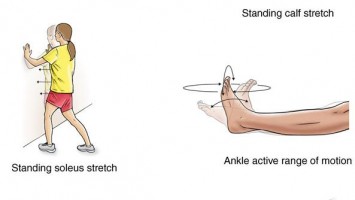What is Diabetes?
Diabetes can strike anyone, from any walk of life. And it does – in numbers that are dramatically increasing. Today, more than 30 million Americans have been diagnosed with diabetes. Worldwide, more than 422 million people have diabetes.
So just what is diabetes?
Diabetes is a serious condition that causes higher than normal blood sugar levels. Diabetes occurs when your body cannot make or effectively use its own insulin, a hormone made by special cells in the pancreas called islets (eye-lets). Insulin serves as a “key” to open your cells, to allow the sugar (glucose) from the food you eat to enter. Then, your body uses that glucose for energy.
But with diabetes, several major things can go wrong to cause diabetes. Type 1 and type 2 diabetes are the most common forms of the disease, but there are also other kinds, such as gestational diabetes, which occurs during pregnancy, as well as other forms.
What is Type 1 Diabetes?
Type 1 diabetes, previously known as juvenile diabetes, is the most severe form of the disease. About 5% of people who have diabetes have type 1 diabetes, or insulin-dependent diabetes. Type 1 diabetes has also been called juvenile diabetes becuse it usually develops in children and teenagers. But people of all ages can develop type 1 diabetes.
In type 1 diabetes, the body’s immune system attacks the insulin-producing islet cells in the pancreas. The islet cells sense glucose in the blood and produce the right amount of insulin to normalize blood sugars. This attack on the body’s own cells is known as autoimmune disease. Scientists are not sure why the autoimmune attack happens.
But once the insulin-producing cells are destroyed, a person can no longer produce their own insulin. Without insulin, there is no “key.” So, the sugar stays in the blood and builds up. As a result, the body’s cells starve. And, if left untreated, high blood sugar levels can damage eyes, kidneys, nerves, and the heart, and can also lead to coma and death.
So type 1 diabetes must be treated through a daily regimen of insulin therapy.
What are the Warning Signs of Type 1 Diabetes?
The onset of type 1 diabetes happens very quickly. The following symptoms may appear suddenly and are too severe to overlook:
•Increased thirst
•Increased urination (bed-wetting may occur in children who have already been toilet trained)
•Rapid and unexplained weight loss
•Extreme hunger
•Extreme weakness or fatigue
•Unusual irritability
•Blurred vision
•Nausea, vomiting and abdominal pain
•Unpleasant breath odor
•Itchy skin
Type 1 Diabetes Treatment
Type 1 diabetes is treated by taking insulin injections or using an insulin pump or other device. This outside source of insulin now serves as the “key” — bringing glucose to the body’s cells. The challenge with taking insulin is that it’s tough to know precisely how much insulin to take. The amount is based on many factors, including:
• Food
• Exercise
• Stress
• Emotions and general health
These factors change a lot throughout every day. So, deciding on what dose of insulin to take is a complicated balancing act. If you take too much insulin, then your blood sugar can drop to a dangerously low level. This is a called hypoglycemia and it can be life-threatening.
If you take too little insulin, your blood sugar can rise to a dangerously high level. Your cells are not getting the sugar, or energy, they need. This is called hyperglycemia. As mentioned above, high blood sugar levels can lead to the long-term complications and can also be life-threatening.
Today, a wide range of computerized diabetes devices are available to help people better manager their blood sugar levels while research toward a cure for diabetes moves forward.
What is Type 2 Diabetes?
The most common form of diabetes is called type 2 diabetes, or non-insulin dependent diabetes. About 90% of people with diabetes have type 2. Type 2 diabetes is also called adult onset diabetes, since it typically develops after age 35. However, a growing number of younger people are now developing type 2 diabetes.
People with type 2 diabetes are able to produce some of their own insulin. Often, it’s not enough. And sometimes, the insulin will try to serve as the “key” to open the body’s cells, to allow the glucose to enter. But the key won’t work. The cells won’t open. This is called insulin resistance. Type 2 diabetes is typically tied to people who are overweight with a sedentary lifestyle.
What are the Warning Signs of Type 2 Diabetes?
The symptoms of type 2 diabetes are similar to those of type 1 diabetes. But the onset of type 2 diabetes is usually slower and the symptoms are not as noticeable as those for type 1 diabetes. For these reasons, many people mistakenly overlook the warning signs. They also might think that the symptoms are the signs of other conditions, like aging, overworking or hot weather.
Type 2 Diabetes Treatment
Treatment for type 2 diabetes focuses on improving ways to better use the insulin the body already produces to normalize blood sugar levels. Treatment programs for type 2 diabetes focus on diet, exercise and weight loss. If blood sugar levels are still high, medications are used to help the body use its own insulin more efficiently. In some cases, insulin injections are necessary.
Look at our diabetic shoes and slippers models.





